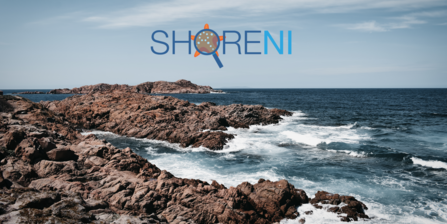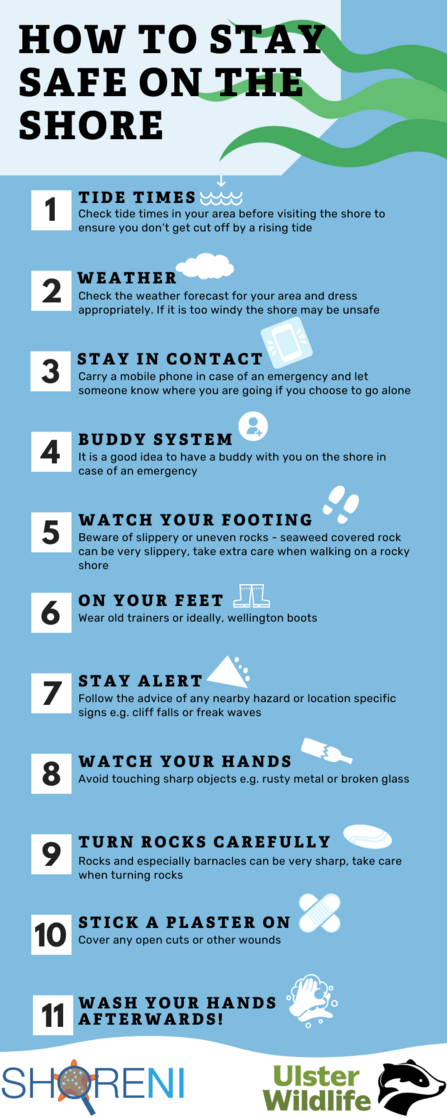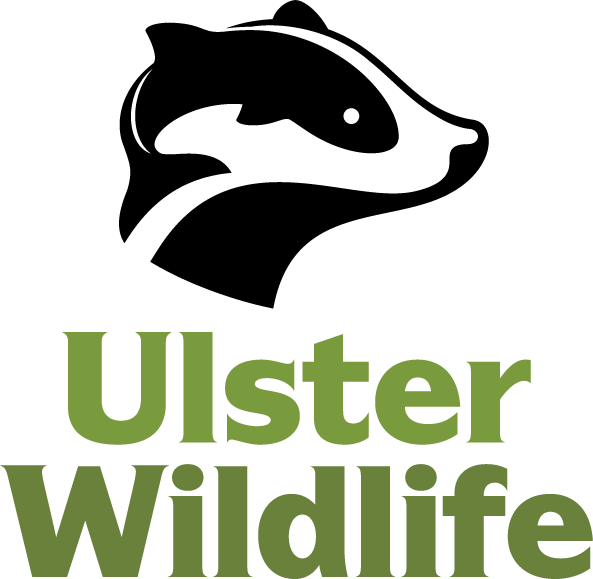Thanks for signing up!
Below you will find everything you will need to get started as a ShoreNI citizen scientist: from when to go, to ID guides - we've got you covered.
You will also shortly receive an email (check your junk folder if it’s not in your inbox) with links to this page, in case you need to navigate away.
How to carry out a ShoreNI survey

Where to look
The ideal time for a shore survey is when the tide is out. The lower shore is usually the best; you will mostly find the animals hiding under stones.
Take care not to squash any animals when putting stones and boulders back, as you found them. Also, make sure you put them back facing the same way, as the wildlife living on the sunny side is different from the ones under the rock!
When to look?
The best time for a shore survey is one hour before the low tide.
Always check the time of tides and know when the tide is about to turn. Free monthly tide times for various locations are available at
Shore Safety

What to look out for
As part of ShoreNI, we’re keeping an eye out for a wide range of marine life that tells us how our shores are changing. This includes:
Main Shore Species: From limpets and barnacles to starfish and seaweeds, we’re tracking the everyday residents of our rocky shores to monitor biodiversity and ecosystem health.
Invasive Species: Non-native species such as wireweed or slipper limpets can disrupt local ecosystems. Spotting them early helps us manage their spread.
Climate Change Indicators: Some species, like warm-water snails or southern seaweeds, are moving north as sea temperatures rise. Recording these helps us understand the impact of climate change on our coasts.
Priority Marine Species: These are rare or threatened species that need special protection, such as the ocean quahog or native oysters. Your sightings help inform conservation action.
Every record you submit helps build a clearer picture of our changing seas and supports efforts to protect Northern Ireland’s marine life.
Recording what you see
Your photos will contribute to a better understanding of local biodiversity and will ultimately lead to more vital conservation work. Once you have found your subject, follow our tips on how to take a picture. Taking a good photo is essential for verifying the identification!
Afterwards, make sure you upload your pictures to iNaturalist. Watch the video guide on how to do this on mobile and desktop.

